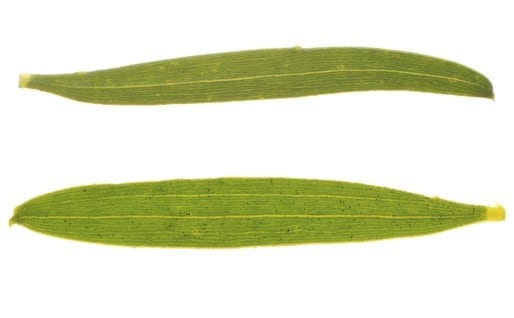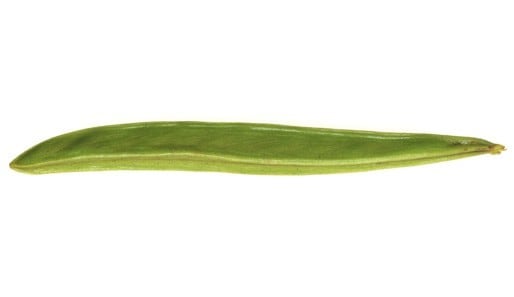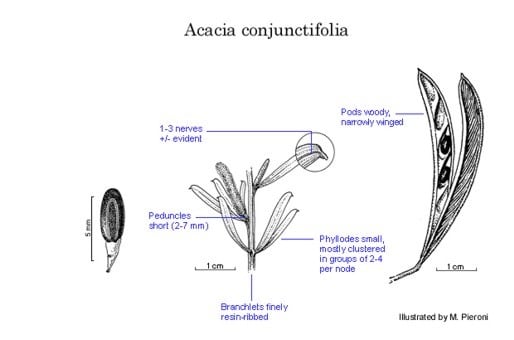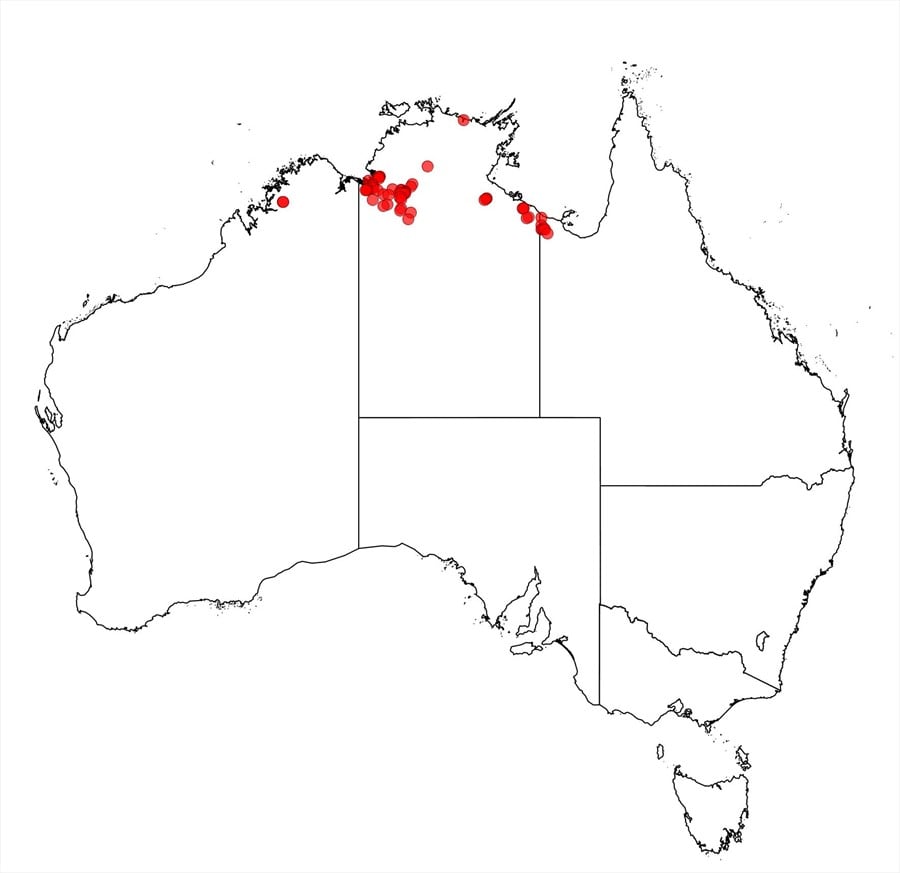Acacia conjunctifolia F.Muell.
WATTLE
Acacias of Australia
Family
Fabaceae
Distribution
Occurs in tropical Australia, in the Victoria R. area and the Gulf of Carpentaria region, N.T., and in extreme north-western Queensland; provisionally also in the NW Kimberley region of W.A..
Description
Shrub to 2 m high, glabrous, resinous. Branchlets angular to almost flattened towards apices, brown to dark brown; ridges prominent, resin-crenulated. Phyllodes single or in clusters of 2–4, linear to narrowly elliptic or narrowly oblanceolate, flat, puncticulate, straight to slightly curved, 1.2–2.2 cm long, 1–2 (–3) mm wide, with inconspicuous margins; midnerve prominent with 1 or 2 inconspicuous longitudinal nerves often not reaching apex; glands 0–3, marginal. Spikes 0.7–3 cm long, pale yellow. Flowers 5-merous; sepals ±free, 0.3–0.6 mm long, glabrous; corolla 0.8–1.5 mm long, dissected to 1/3–1/2, glabrous; ovary slightly scurfy. Pods erect, ±linear, broadest above middle and tapered towards base, ±straight-sided, straight to slightly curved, flat, 3–7 cm long, 3.5–7 mm wide, thick, obliquely–longitudinally striate, opening elastically from apex; margins thickened, often narrowly winged. Seeds oblique, oblong- or narrowly oblong-elliptic, 3–6 mm long, dark brown; areole oblong-elliptic, open, with a pale halo around pleurogram; funicle-aril narrowly conical.
Phenology
Flowers May–Sept.
Habitat
Grows in stony, sandy soils often on laterite or quartzite, in mixed eucalypt woodland or scrubby open forest.
Specimens
W.A.: N side of Wren Gorge, 4.7 km NE of Calder River crossing track to Walcott Inlet, R.L. & M.D. Barrett RLB 4002 (PERTH). N.T.: 50 miles [80 km] SW [of] Willeroo HS, 9 May 1960, G.Chippendale (DNA, NSW, PERTH); 47.2 km W of Top Springs turnoff, on Victoria Hwy, M.D.Tindale 10113, P.Munns & R.Turvey (BRI, DNA, K, MEL, NSW, PERTH). Qld: 16 km W [of] Westmoreland HS, J.R.Maconochie 2037 (BRI, CANB, DNA, NSW, PERTH); 9 miles [14.4 km] W of Westmoreland Stn, R.A.Perry 1341 (BRI, CANB, MEL, NSW, PERTH).
Notes
The clustered arrangement of the phyllodes is unusual in sect. Juliflorae. Related to A. phacelia and probably A. amentifera. The W.A. (flowering and sterile) material provisionally referred to A. conjunctifolia differs from specimens elsewhere in having sometimes slightly larger phyllodes (15–30 x 3–5 mm) which may possess a less pronounced mid-nerve. Further study is needed to check the status of these plants because they may possibly represent a hybrid between A. phacelia and A. tenuispica; see B.R.Maslin, M.D.Barrett & R.L.Barrett, Nuytsia 23: 561–562 (2013), for further notes.
FOA Reference
Data derived from Flora of Australia Volumes 11A (2001), 11B (2001) and 12 (1998), products of ABRS, ©Commonwealth of Australia
Author
Dr M.D.Tindale and Dr P.G.Kodela with the assistance of M.Bedward, S.J.Davies, C.Herscovitch, D.A.Keith and/or D.A.Morrison
Minor edits by B.R.Maslin & J.Rogers
This identification key and fact sheets are available as a mobile application:
URL: https://apps.lucidcentral.org/wattle/
© Copyright 2018. All rights reserved.











